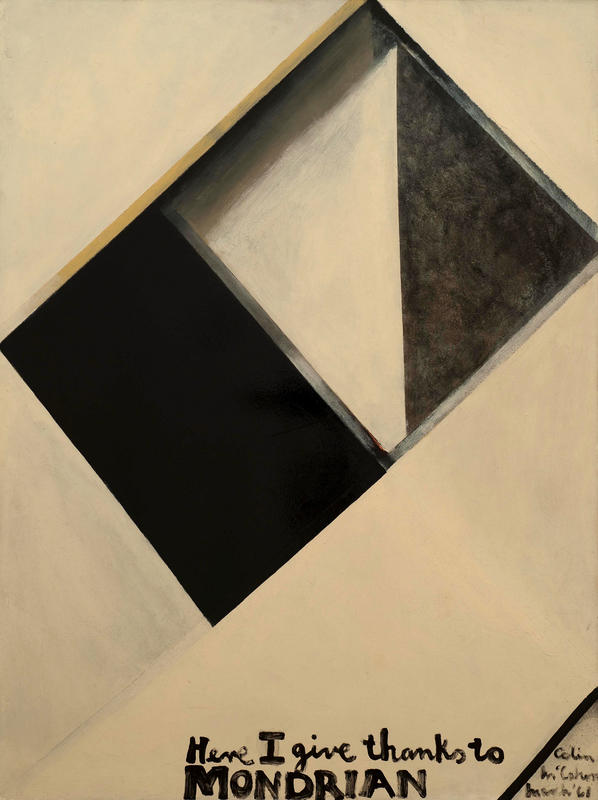—

exhibition Details
Towards Auckland considers the years Colin McCahon worked at the Auckland City Art Gallery (1953–1964). Curator Hamish Keith, McCahon's colleague at the Gallery from 1958, reveals that they were critical years for the painter both professionally and artistically.
The move north from Christchurch provided McCahon with myriad new subject matter. He marvelled at the qualities of light, atmosphere and geography in his new home, producing the cubist-inspired Towards Auckland, Titirangi, Kauri and French Bay series. In 1958, he travelled to the United States introducing him to the latest trends in American painting. Upon returning home, he executed a series of Northland paintings, which were a dramatic departure from his Titirangi works. They contained no trace of European modernism. Keith argues that McCahon discarded the influence of cubism 'in favour of the freshness and immediacy he had observed and admired in the work of contemporary American painters.'
Keith further emphasises that 'What changed for McCahon during the Gallery years was also fundamentally about subject. He leapt away from the familiar, if never comfortable, themes of nationalism, identity and personal faith, to what might broadly be described as metropolitan issues.' McCahon created works that responded to his urban environment and to issues of global concern. His Gate series, made at a time when the fear of nuclear holocaust was a constant, were revolutionary in confronting such subject matter. These works sought to express the very human fear such events provoked and 'a way through' for humanity.
In this exhibition, Keith explains, 'the journey from On Building Bridges to the Gate series represents more than just a maturing of an artist's style. It sums up the critical changes that took place in New Zealand during Colin McCahon's Gallery years – the shift from a regional to an urban culture.'
Colin McCahon: Painter, Keeper, Teacher
Colin McCahon (1919-1987) is widely acknowledged as one of New Zealand's most exceptional 20th century artists. Born in Timaru, he studied part-time at Dunedin School of Art from 1937-39. His early works captured the unique qualities of the New Zealand landscape, later depicting religious subjects within it. Supporting himself and his family with seasonal work, he lived in various towns throughout the South Island until 1948 when he settled in Christchurch.
In 1953, McCahon moved to Auckland for a job at Auckland City Art Gallery. Starting initially as a part-time cleaner, then working as an attendant, he later attained the position of Keeper, holding the role until 1964. As well as participating in the day-to-day running of the Gallery, McCahon curated many exhibitions, wrote catalogues, cared for the collection and taught painting classes in the Gallery's attic. With Director Peter Tomory, he played a critical role in recognising the importance of New Zealand art, both historic and contemporary.
McCahon's Gallery years were also artistically productive, often using the Gallery's attic as a painting studio. From September 1964 he taught painting at Elam School of Fine Arts, only becoming a full-time painter upon his retirement in 1971.
His work traversed subjects as diverse as landscape, identity, religion, faith, doubt and the threat of warfare but his ultimate concern was with the human condition. Not only was McCahon a remarkable painter, but the critical thought and philosophical enquiry of his works carry great weight, continuing to resonate with viewers today.
- Date
- —
- Curated by
- Hamish Keith, assisted by Jane Davidson
- Cost
- Free entry
Related Artworks
Here I give thanks to Mondrian
oil (alkyd) on hardboard
Auckland Art Gallery Toi o Tāmaki, gift of the Friends of the Auckland Art Gallery, 1964
Landscape theme and variations (series A)
oil on eight unstretched jute canvases
Auckland Art Gallery Toi o Tāmaki, gift of the McCahon Family, 1988












